Photographer Ken Ohyama has a magnificent Flickr photoset of highway interchanges in Japan (78 photos).
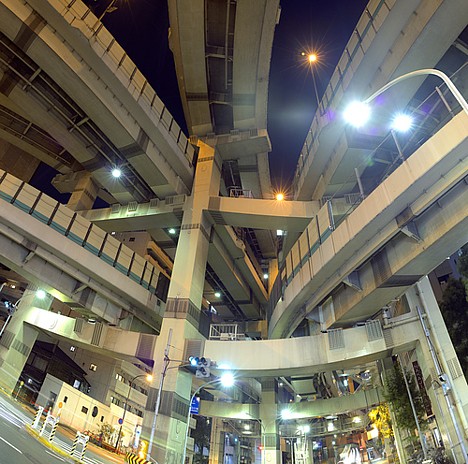
Hakozaki Junction
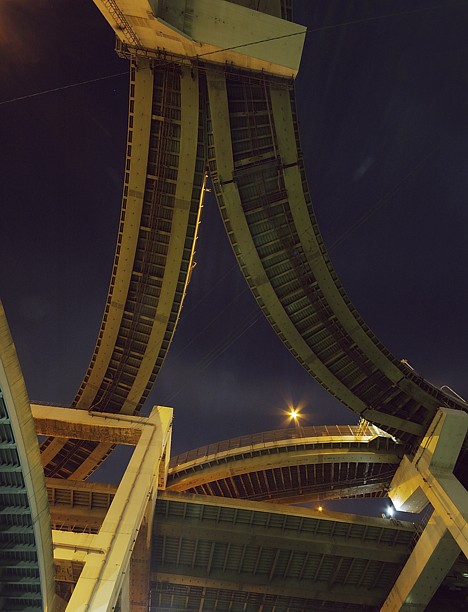
Hokko Junction
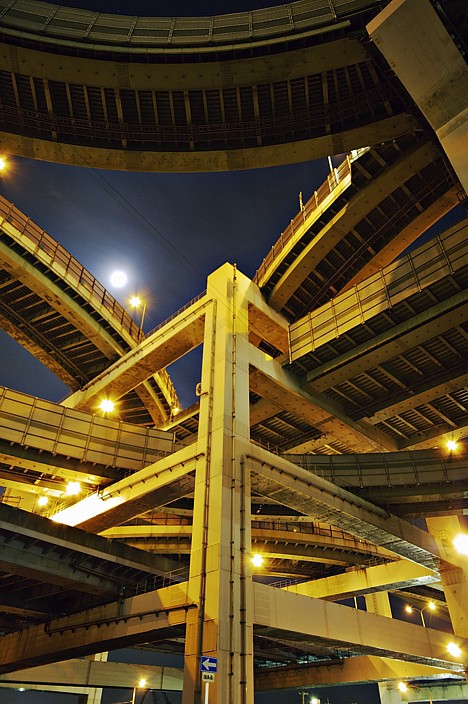
Hokko Junction
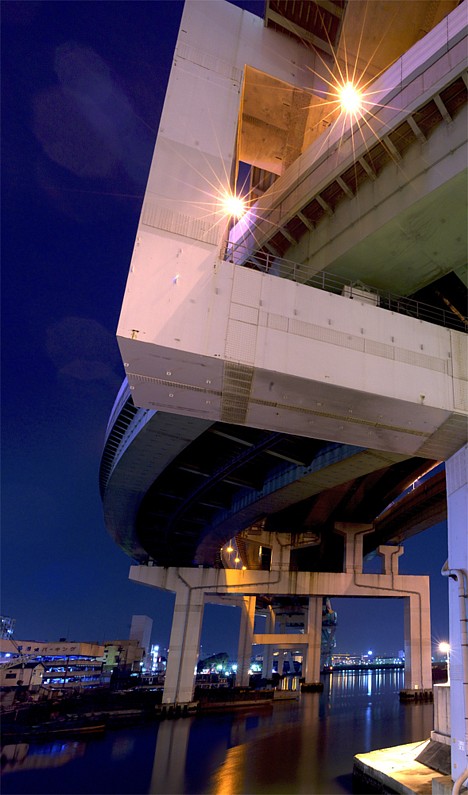
Tempozan Junction
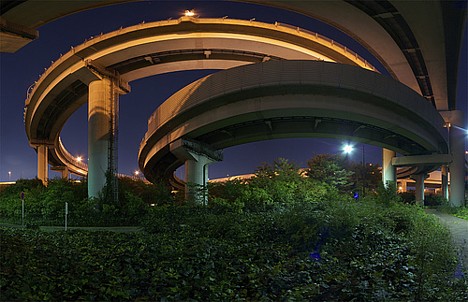
Daikoku Junction
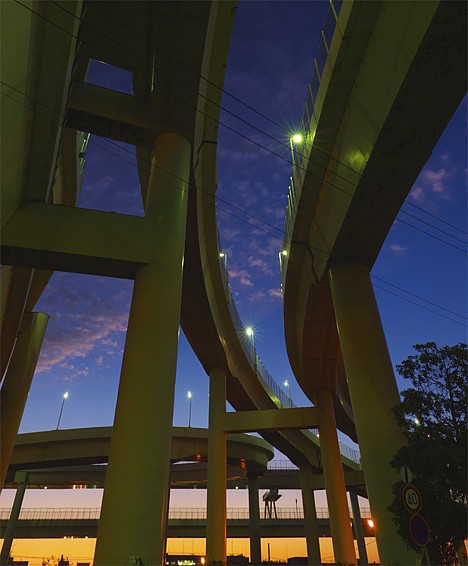
Kawaguchi Junction
He also has a book of these photographs.
Photographer Ken Ohyama has a magnificent Flickr photoset of highway interchanges in Japan (78 photos).

Hakozaki Junction

Hokko Junction

Hokko Junction

Tempozan Junction

Daikoku Junction

Kawaguchi Junction
He also has a book of these photographs.

Nana, a beluga born at the Port of Nagoya Public Aquarium in July 2007, enjoys creating air bubble rings under water. While it's not uncommon for belugas to make bubbles by blowing out short puffs of air, Nana has the remarkable ability to suck air bubble rings into the water by swimming near the surface and drawing in big gulps of water. (Go :55 seconds into the video to see this in slow motion.)
[Video: Beluga bubbles]
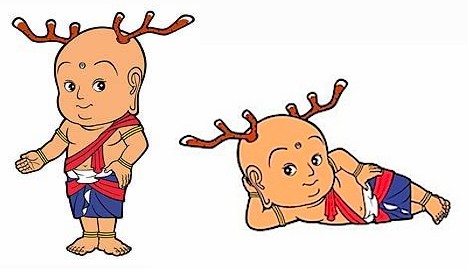
Sento-kun
Ever since his unveiling in February, Sento-kun, the official mascot character for the Commemorative Events of the 1,300th Anniversary of the Nara-Heijokyo Capital, has garnered widespread criticism from the media, religious groups and the blogosphere. A Buddhist child monk with a rack of deer antlers sprouting from his head, Sento-kun is supposed to evoke the image of Nara's rich Buddhist history and the wild (but tame) deer that roam freely around town. But some citizens have expressed anger at officials for shutting them out of the decision-making process and wasting 5 million yen (about $50,000) of taxpayer money on an ugly mascot, and some Buddhist groups are reportedly upset with the inappropriate use of a religious image.
In response to the fiasco, a group of Nara-area designers called the "Creators Forum Yamato" have voluntarily organized an independent design contest to come up with a mascot that more closely represents the will of the people and the true spirit of Nara. After receiving 619 submissions from the general public (some from as far away as New York and Paris), organizers have narrowed the pool to 30 candidates and are encouraging the public to vote online.
Here are the candidates on the ballot...
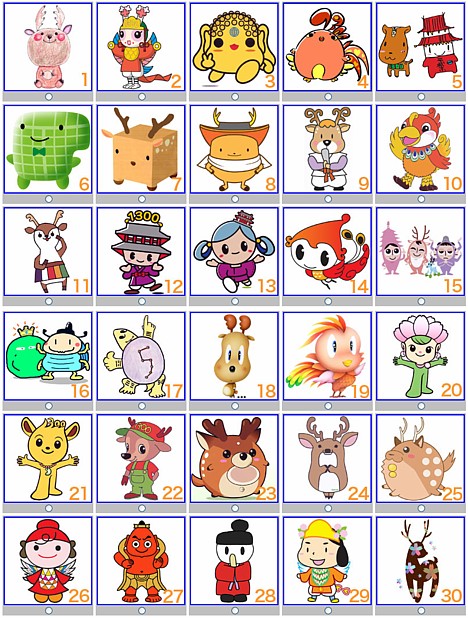
To vote, go to the online ballot, select the button under your favorite character, and hit the confirmation button at the bottom of the screen. Then hit the confirmation button on the next screen. The polls are open until May 25. As of this writing, nearly 15,000 ballots have been cast.
As a representative of the citizens of Nara prefecture, the winning mascot will work side-by-side with Sento-kun to make the anniversary event a success.
The Commemorative Events of the 1,300th Anniversary of Nara Heijokyo Capital will be held in Nara prefecture in 2010 to commemorate the 1,300th anniversary of the founding of Heijokyo (now known as Nara), the capital of Japan from 710 to 784 A.D. The large-scale, year-long international project is expected to attract 15 million visitors.
UPDATE: The votes are in and the winner is Manto-kun (#8).
In early 19th-century Japan, it became fashionable for the culturally sophisticated theatergoing population of Edo to entertain themselves at parties by imitating the voices and gestures of famous actors. As this fad spread, people began to expand their repertoires by mimicking animals, and as animal poses became all the rage at parties, writers and artists collaborated to produce illustrated books containing model examples of these poses. One such document written by poet Santo Kyoden in 1809 included copies of these Utagawa Toyokuni ukiyo-e prints of men imitating birds.
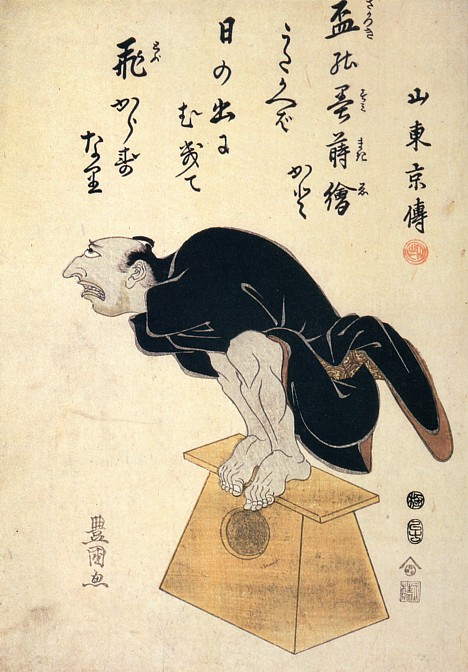
Crow pose
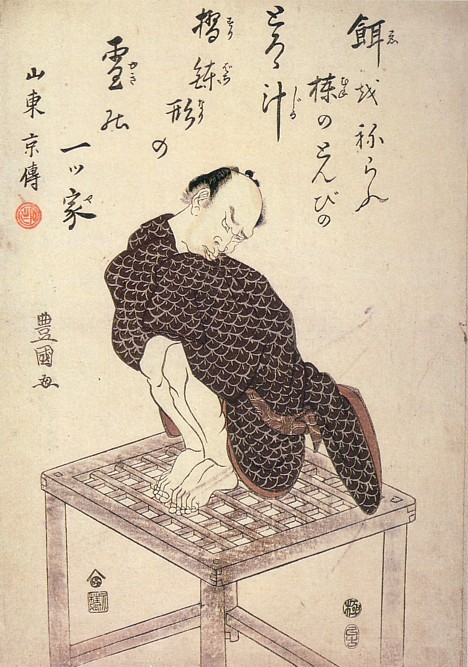
Hawk pose
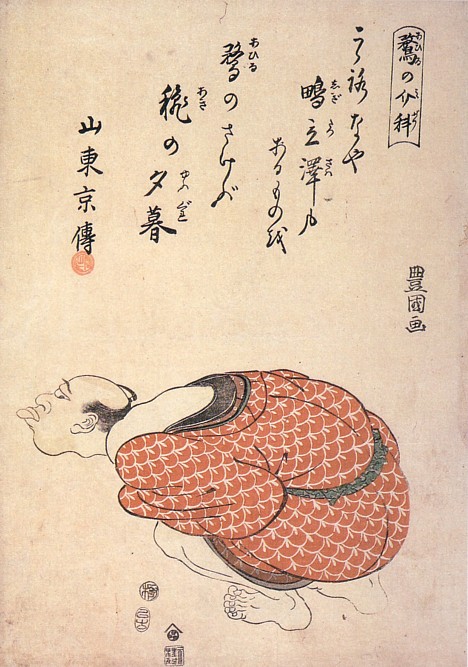
Duck pose
The work, titled Harasuji Omuseki (?????), consisted of several volumes that also featured poses for animals other than birds. Waseda University has an online copy of Volume 3, which includes the animal poses below.
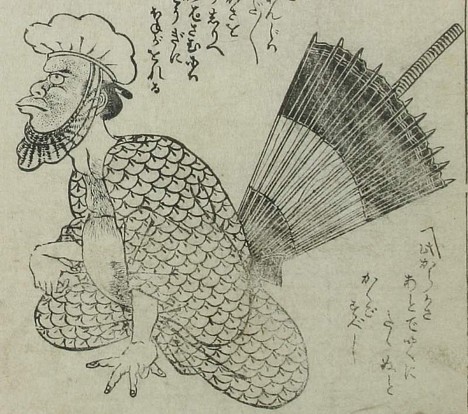
Chicken pose
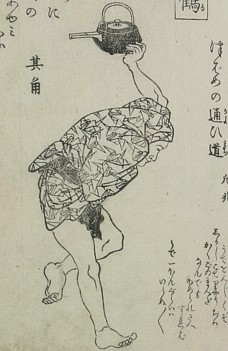
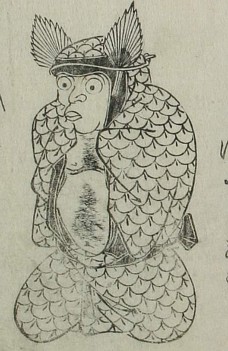
Crane pose, Owl pose
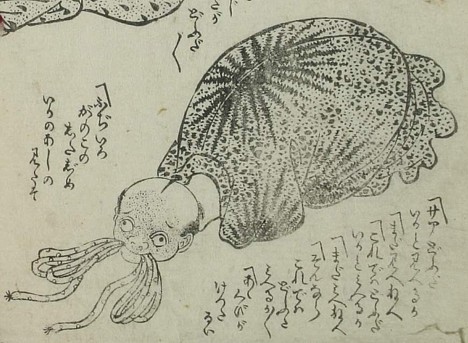
Squid pose
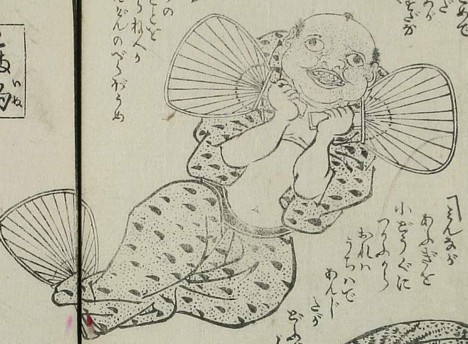
Goby pose
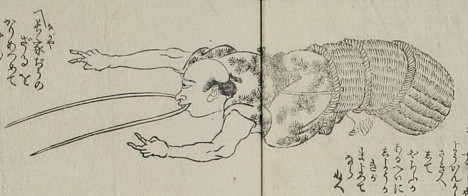
Shrimp pose
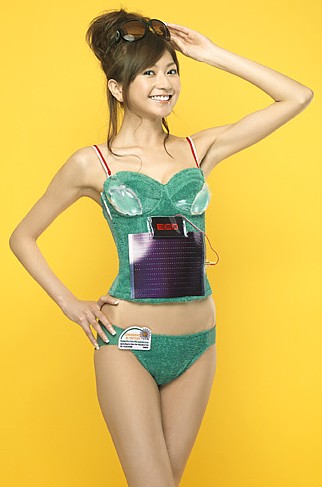 Lingerie maker Triumph International Japan has unveiled a new eco-friendly concept bra called the "Solar Power Bra" (太陽光発電ブラ - Taiyoko Hatsuden Bra), which aims to stimulate eco-awareness and promote clean energy.
Lingerie maker Triumph International Japan has unveiled a new eco-friendly concept bra called the "Solar Power Bra" (太陽光発電ブラ - Taiyoko Hatsuden Bra), which aims to stimulate eco-awareness and promote clean energy.
The green, high-quality cotton bra features a waist-mounted solar panel that powers a small, chest-mounted electronic billboard or any other electronic device you choose to connect. A pair of reusable drink containers attach to the bra cups, allowing the wearer to reduce consumption of aluminum cans and plastic bottles while increasing bust size. When not in use, the containers can be collapsed and stored in small pockets in the cups.
Triumph hopes the bra inspires people to think about global warming, the dwindling supply of fossil fuels, and the future of energy.
[Source: Nikkei]
A few of the many concept bras by Triumph:
- NO! Shopping Bag Bra
- Voter Turnout Lift-UP Bra
- My Chopsticks Bra
















Video-sharing service Nico Nico Douga has a mesmerizing collection of 700 animated GIFs for use on their site. [Via Xorsyst]
These photographs of Japanese custom scooters come from bike shop galleries, auction sites, and Flickr. Follow the links for more images.
* * * * *
Bikeshop Rodeo has killer photos of their mean machines.
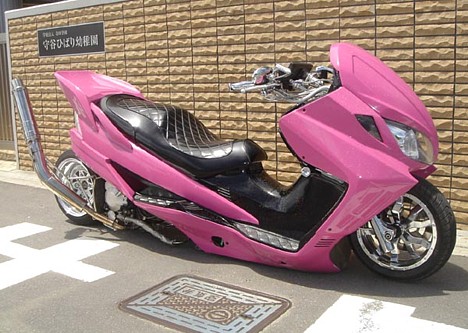
Suzuki Skywave
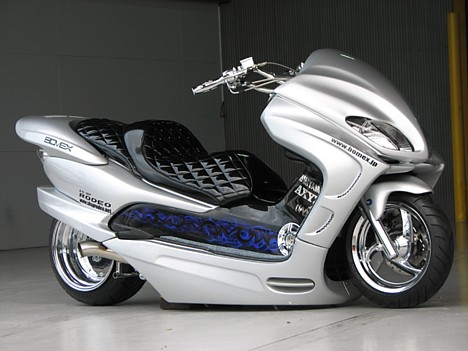
Honda Forza
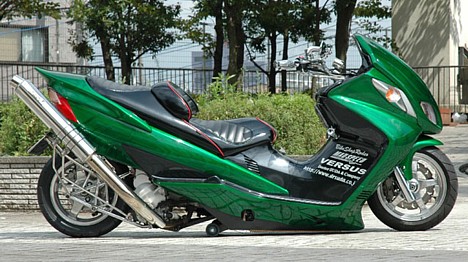
Suzuki Skywave
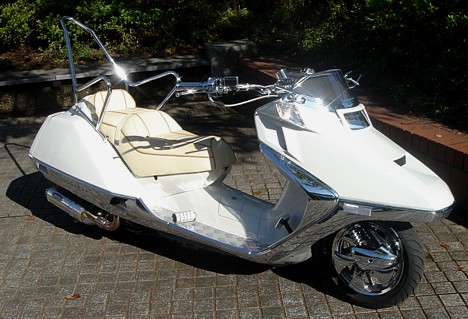
Honda Fusion
* * * * *
Gull Craft transformed Honda Forzas into these retro-futuristic KYBELE cyber scooters, and their photo report shows how to make your own. (Via AutoblogGreen)
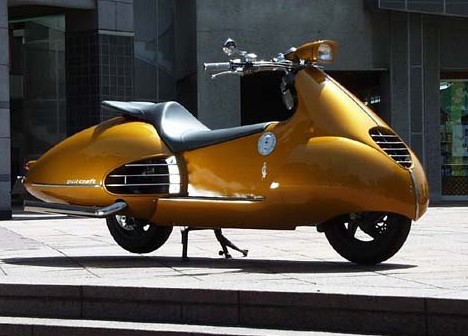
KYBELE Cyber Scooter
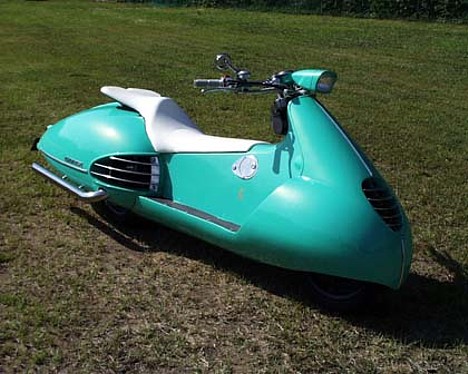
KYBELE Cyber Scooter
* * * * *
Flickr user tokyo scooter stuff has thrown together an awesome collection of found photos of custom rides.
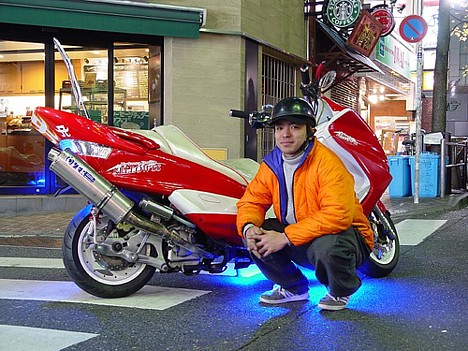
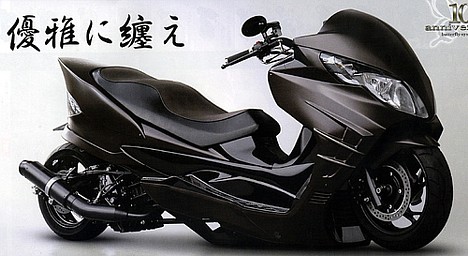
Suzuki Skywave
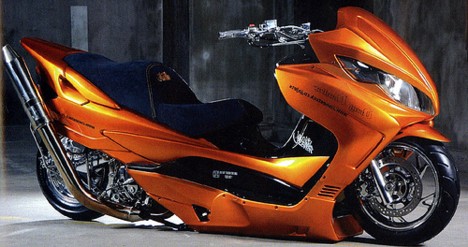
Suzuki Skywave
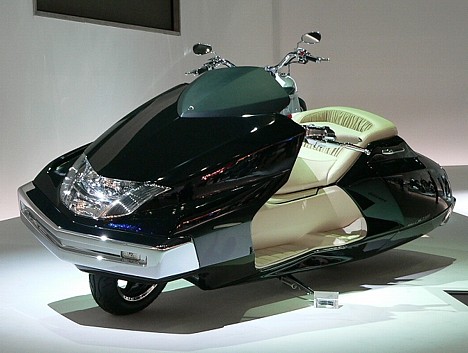
Yamaha Maxam 3000 Concept @ Tokyo Motor Show
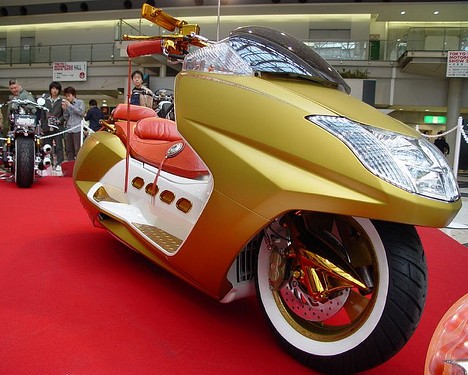
Yamaha Maxam @ Tokyo Motor Show
* * * * *
This Yamaha Maxam is for sale on Yahoo! Auctions. With only a few hours left as of this writing, the highest bid is 400,000 yen (under $4,000).
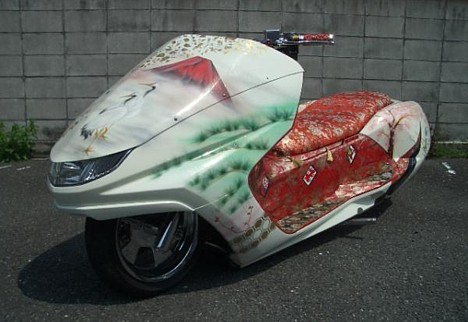
Yamaha Maxam
* * * * *
From Alfa Auto:
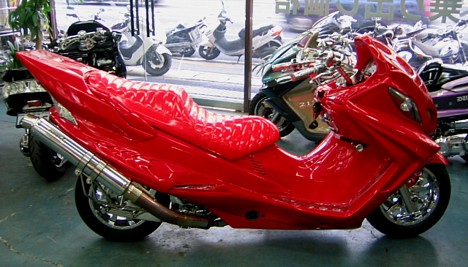
Honda Forza
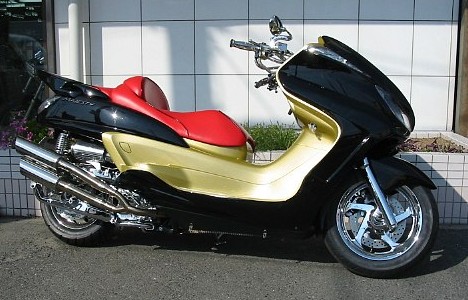
Yamaha Grand Majesty
* * * * *
From Lotaus:
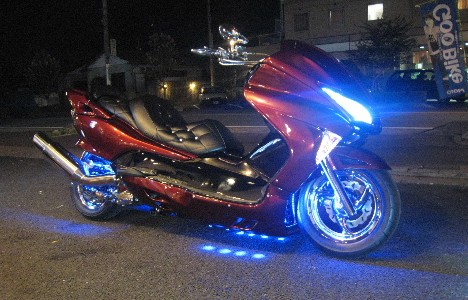
Suzuki Skywave
* * * * *
From M-Style:

Suzuki Skywave
* * * * *
The Japanese Scooters Flickr pool has lots of great photos, too. Not sure what these guys are riding, but it looks like fun.
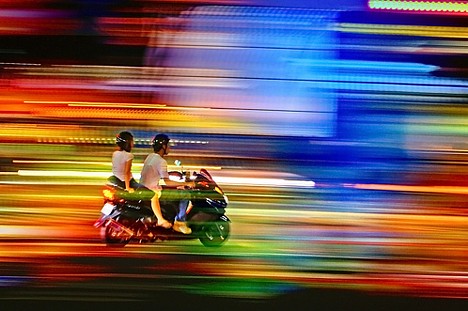
Beat (Photo by gori-jp)
More outrageous modes of transportation:
- Dekotora photo galleries
- Extreme Japanese custom vans
- Dekochari art bikes
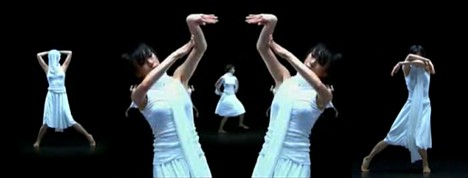
Omodaka, a creative project adopting a self-described "trial and error process of mutational fusion of music and motion graphics," has a new video for chiptune disco track "Kyoteizinc," which features the captivating computer-tweaked dance of Masako Yasumoto. (Watch it.)
The video is directed by Hiroshi Kizu. Omodaka is on Tokyo-based independent label Far East Recording.
Kintaro (a.k.a. "Golden Boy"), a popular child folk hero embodying strength and bravery, appears in statues, storybooks, anime, manga, noh, kabuki and candy. He was also the subject of numerous Edo-period woodblock prints.
Various legends say that Kintaro was raised by a Yamamba ogress in the mountains, where he learned to communicate with animals. In this Kuniyoshi print, Kintaro wears a dragon haramaki and referees a sumo match between a rabbit and a monkey, while an eerie blue demon and tengu look on.
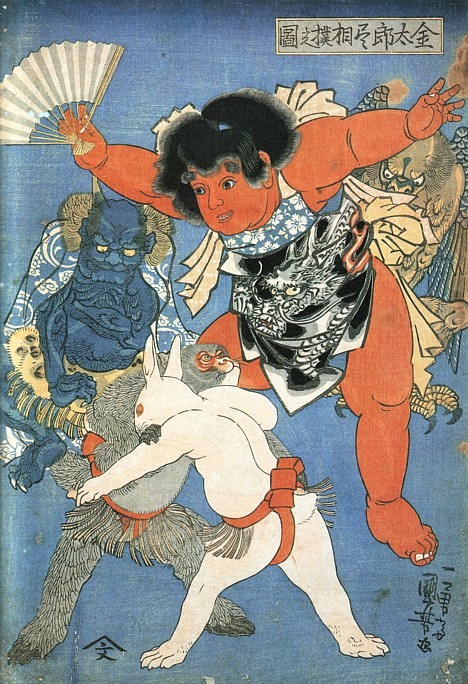
Kintaro Referees Sumo Bout Between Rabbit & Monkey (Kuniyoshi, ca. 1830)
As a youngster, Kintaro developed superhuman strength that enabled him to crush boulders, fight monsters and demons, uproot trees, and defeat bears at sumo. In this Yoshitsuya print, Kintaro demonstrates his unparalleled fighting skills by overpowering a giant python. His trademark axe is pictured at the bottom.
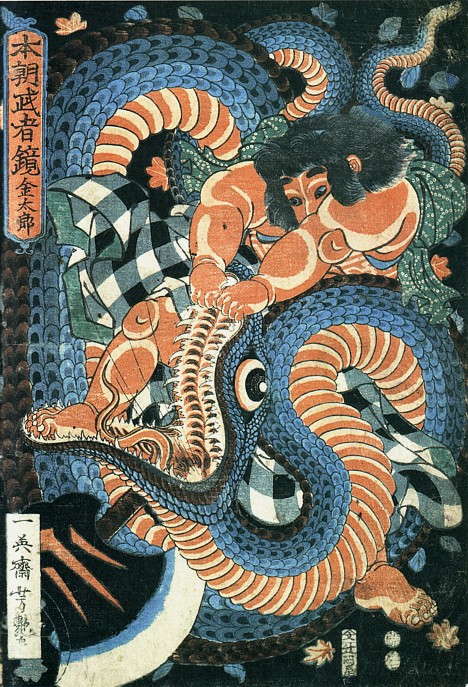
Model Warrior of Japan: Kintaro (Yoshitsuya, 1856)
The next series of prints, also by Yoshitsuya, show Kintaro with monsters and animals at various times of the year.
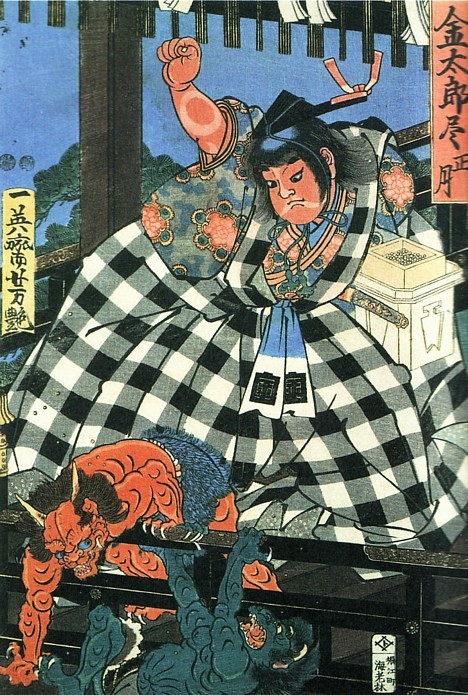
Kintaro at New Year's, Throwing Beans to Dispel Demons (Yoshitsuya, ca. 1840)
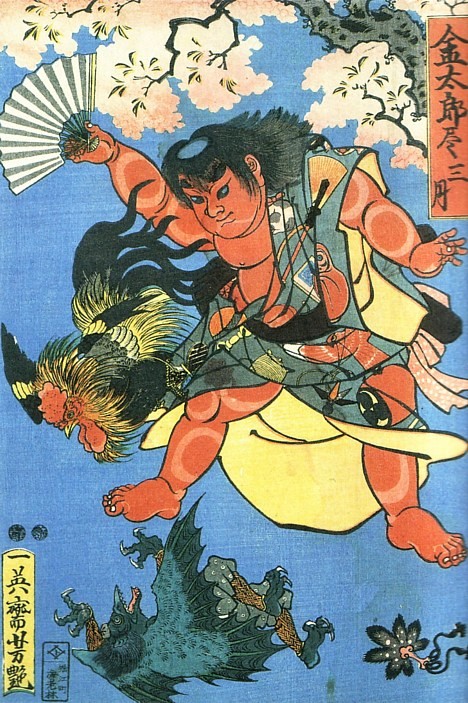
Kintaro in the Third Month, Refereeing Sumo between Rooster & Crow Tengu (Yoshitsuya, ca. 1840)
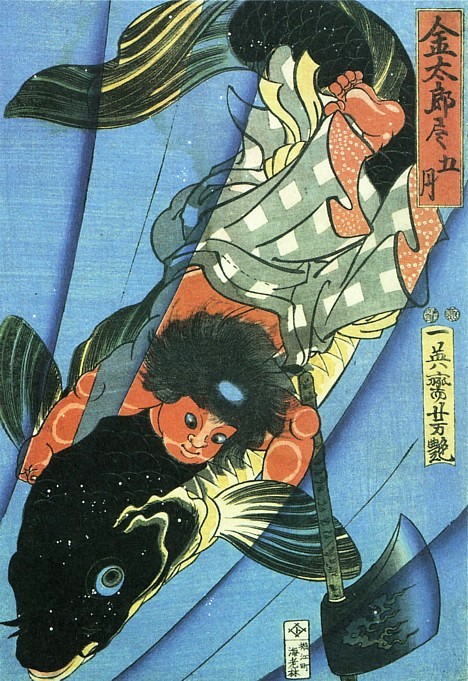
Kintaro in the Fifth Month, Riding a Carp (Yoshitsuya, ca. 1840)
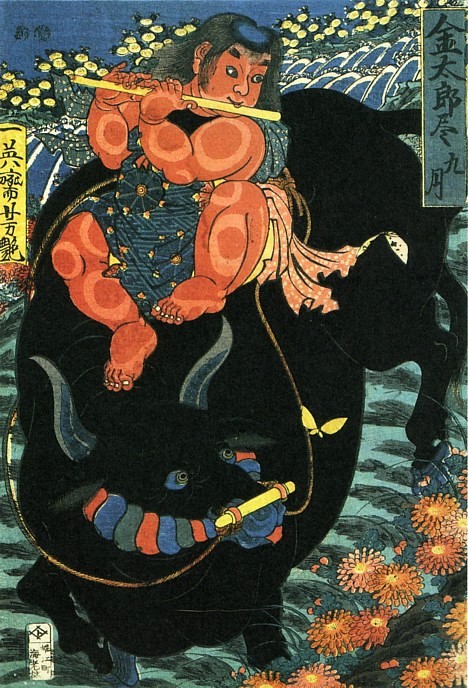
Kintaro in the Ninth Month, Riding a Bull (Yoshitsuya, ca. 1840)
Kintaro appears to be based on a real person named Sakata no Kintoki, a powerful Heian-period (794 to 1185 AD) warrior whose legendary status has grown with time. This Kuniyoshi print shows the young warrior wrestling a giant carp under a waterfall.
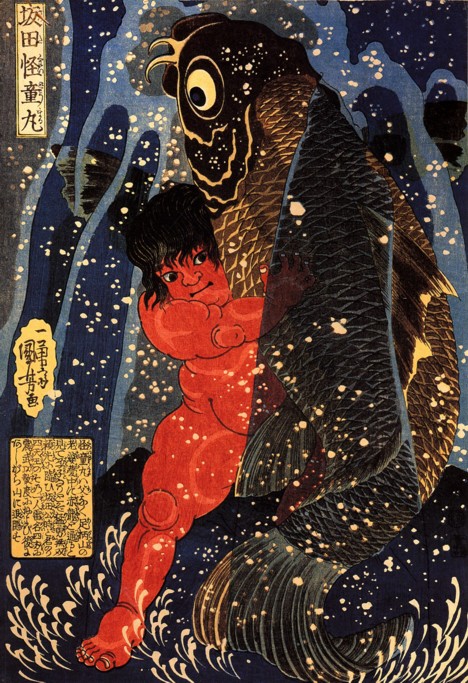
Kintaro Struggles with Giant Carp (Kuniyoshi, ca. 1835)
Kintaro is closely associated with Children's Day (May 5), when parents of young boys typically display Kintaro dolls -- usually riding a large carp -- in the hope that their kids grow up to be brave and strong.
[More: Kintaro (Wikipedia)]